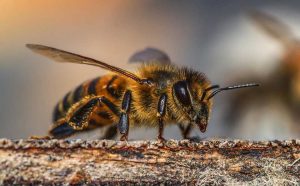Creativity is often confused with the arts. If you don’t think of yourself as artistic, you might not think it’s important to develop your creativity. And, we easily overlook how important creativity really is to each and every one of us.
Examples of creativity are all around us, whether we have paintings on our walls or not. The furniture around us is a result of human creativity, as well as all the products at a pharmacy, every new car model, and even the bad jokes that your father-in-law makes up. There are so many examples of creativity that we take it for granted. And the problem with taking creativity for granted is that if we don’t develop our own creativity, we miss the opportunity to make a positive impact on how our own lives unravel and the future of the world we share.
The fact is that creative thinking is a life skill: it’s like a muscle that you can learn to flex or that you can allow to weaken. The more you flex it the more you are able to problem-solve. That’s because creative thinking is a complex thinking skill, a higher order cognitive skill (see Bloom’s Taxonomy for an understanding of how it relates to other thinking skills), and unfortunately, not one that is nourished in most educational systems.
How to Develop Your Creativity Using This Definition
There are many approaches to understanding creativity, making it hard to agree on a final definition. Here’s a simple definition of creativity that I like to use:
Creativity is the ability to bring original and meaningful ideas into reality.
Let’s break down this definition of creativity:
- If all you did was have ideas, but you never did anything with them, then the ideas are created in your imagination only.
- If all you do is bring original ideas into reality, but the ideas are not meaningful or useful in any way, that would be pure originality, but not creativity.
- If all you did was create useful and meaningful things that were not original, then you are just recreating existing ideas. And that’s all great as long as you don’t run into any new problems or you are expecting things to always remain the same.
If you accept that change is the only constant and you want to have the ability to bring about positive change, then you need your creativity.
The Levels of Creativity
Your level of creativity depends on the level of originality and meaningfulness. The types or levels of creativity, explored in detail in this blog post, are:
- Mini C: The simplest level of creativity; what any of us do when we’re engaged in learning something for the first time.
- Small C (also known as everyday creativity): What you use naturally when solving day-to-day problems.
- Professional C: Relies on at least some specialized knowledge and expertise.
- Big C (also known as Eminent C): Involves specialized knowledge or expertise AND has a widespread impact.
Something you do that is original and creative to you only and no one else is an example of Mini-C Creativity. On the opposite end of the spectrum is something that is original and meaningful to the world at large; that’s Big C or Eminent Creativity. The difference between Mini C Creativity and Big C Creativity is like the difference between a child’s very original love note to a parent and Shakespeare’s Romeo & Juliet. Or the difference between your home-made patch to fix the garden hose and a government’s water conservation plan.
The Formula for Creativity
The common thread between the four types of creativity is that any type or level of creativity requires a level of ability. Creativity is an ability that all people have in varying degrees. And whatever your level of creative ability is, your creativity can be further developed.
To understand how to develop your creativity, it is useful to understand what’s involved in being creative. Well guess what? There’s a mathematical formula for creativity.

Creativity is a function of an Attitude multiplied by Knowledge plus Imagination and Evaluation.
Attitude refers to the willingness to take risk, the ability to be tenacious and persistent, and the courage to make bold decisions that divert from tradition or from what others have done in the past.
Let me give you an example. There’s a big difference between what a knowledgeable cook can create out of flour, eggs and water and what I can create. I’ll let you in on a little personal secret: I have a very well-developed imagination but very little culinary knowledge. Without a recipe, I would have no idea what to do with these three ingredients. I can imagine all sorts of great looking meals, but I couldn’t bring any of them into reality. In fact, without a recipe, I’d probably leave the flour and water out and just make a very unoriginal omelet. I would default to an omelet because my lack of knowledge makes me want to avoid risks, especially if others are expecting to eat whatever I make.
This explains why the more knowledge you have in a certain area, the more impact you can have with your creativity, but only if you know how to tap into your imagination and evaluate options with a courageous attitude.
By the way, there’s a long list of inventions that we now take for granted and can easily recreate by following directions. The first people to create these inventions had to combine knowledge and imagination with some evaluation of what’s likely to work or not work (or a willingness to experiment), along with the courage to bring their idea into reality.
Flies versus Bees
There is one more thing you need to know about the formula, and before I tell you, I need to ask you to exercise your imagination:
Let’s pretend I am holding a glass jar in my hands. Let’s also imagine that there is a big window to my right. It’s a summer day and the sun is pouring in through the window.
Are you with me? Can you imagine that so far? Great, stay with me.
Now let’s imagine that the opening of the jar is facing left, away from the window. I fill the jar with ten bees and ten flies. What do you think happens next?
What happens is that after about 10 or 30 seconds, all the flies have flown out of the jar and the bees are all stuck at the bottom of the jar. Why do you think that is?
 It’s because the bees retain knowledge. Their knowledge is based on past experience, and they know that where the source of light is, is usually the way out. The bottom of the jar was facing the sunny window, so that’s where the bees went.
It’s because the bees retain knowledge. Their knowledge is based on past experience, and they know that where the source of light is, is usually the way out. The bottom of the jar was facing the sunny window, so that’s where the bees went.
 The flies on the other hand, have nothing but an attitude. They will fly in every direction they can, and they will hit their wings as many times as necessary until they find a way out.
The flies on the other hand, have nothing but an attitude. They will fly in every direction they can, and they will hit their wings as many times as necessary until they find a way out.
Don’t Be a Bee with Your Creativity!
I share this story, because as adults we have a tendency to be like the bees. The more knowledge we have, the more we think we know the answer. We lose the willingness to experiment with different options, we avoid hitting our wings, and we are prone to getting stuck in old knowledge.
This is why the formula for creativity is so great. It reminds us that a balance of knowledge, imagination, and evaluation with an attitude and willingness to fail and try new things are what you need to develop your creativity. Let’s also remember that creativity doesn’t just lead to new fancy products; it also leads to the creation of new knowledge, which is important to move us forward in the important journey of creating a better world for everyone.
Be a fly, not a bee! NeOlé can help you develop your creativity with group training and individual coaching. Contact us today.







